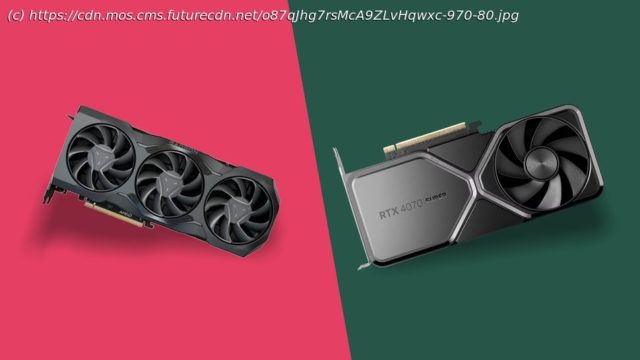The RX 7900 GRE vs RTX 4070 Super, by the numbers
If you’re looking to put a new build together then you’ve picked an incredibly exciting time to consider a new mid-range GPU. This year may be young but we’re already seeing new variants spicing up AMD’s and Nvidia’s respective graphics card generations and we’re comparing the RX 7900 GRE vs RTX 4070 Super to see which one’s worth your money and why.
We’ll be going over the RX 7900 GRE and RTX 4070 Super in detail from their respective price points, design, specifications, and performance so that you can make an informed purchasing decision. After all, even if neither quite rivals the bleeding edge performance of the best graphics cards and best 4K graphics cards, any new GPU is a sizable investment.
While the RX 7900 GRE hit the scene exclusively in China last year, it only just hit Western shores with its worldwide availability on February 27, 2024. By comparison, the RTX 4070 Super wasted no time from reveal to release after being unveiled at CES 2024 at the beginning of the year and then being available less than two weeks later. Let’s find out if it’s true what they say about good things coming to those who wait.RX 7900 GRE vs RTX 4070 Super: Price
The sticker price is always going to carry a huge amount of weight when considering a new GPU and it’s no different with the RTX 7900 GRE and the RTX 4070 Super.
Starting with AMD’s latest to go worldwide, the smallest of the Navi 31 lineup is available now for $549 / £529.99 / AU$929. By comparison, Nvidia’s RTX 4070 Super can be found for $599 / £589.99 / AU$999. That positions the RDNA 3 card as the cheaper of the two by a full $50 which could make all the difference.
Where the RTX 4070 Super wins some favor is the fact that it’s priced identically to the RTX 4070 launch price from late 2022, but with a fair bit more under the hood. Namely, a full 20% more CUDA cores making it the definitive choice out of the two Lovelace mid-range models. Then we get onto the RX 7900 GRE’s place in the market which is arguably more exciting.
That’s because the RX 7900 GRE was originally sold exclusively in China and offered as a cheaper alternative to the RX 7900 XT. Now, however, it’s available globally, and with a price that’s just $50 more than the RX 7800 XT. We’ve considered this card to be the “best midrange on the market” but the addition of a new contender could sway the scales. If you want the cheaper of the two cards then the GRE takes the win here.
Winner: AMD Radeon RX 7900 GRERX 7900 GRE vs RTX 4070 Super: Specs
It’s not only a naming convention that the RX 7900 GRE shares with the rest of the RDNA 3 flagships, but it’s also the silicon. That’s because the Golden Rabbit Edition is essentially a cutdown version of the RX 7900 XT forged on the same Navi 31 die. It features a total of 5,120 Stream Processors and 16GB GDDR6 memory on a 256-bit memory bus. It also rocks a total of 320 Texture Mapping Units and 160 Render Output Units.
In comparison, the RTX 4070 Super features a total of 7,168 CUDA cores and 12GB GDDR6X memory on a 192-bit memory bus and is built upon the AD104 die. It has a total of 224 Texture Mapping Units with 80 Render Output Units. The two GPUs go blow for blow in quite a few respects, with the former having a larger memory pool and bus, and the latter utilizing considerably faster memory in a more efficient package.
Speaking of efficiency, the advancements made in Nvidia’s Lovelace architecture mean the RTX 4070 Super has a lower power draw with its 220W TDP. The GRE, in contrast, is rocking a 260W TDP, with as much as 300W power draw under load.






